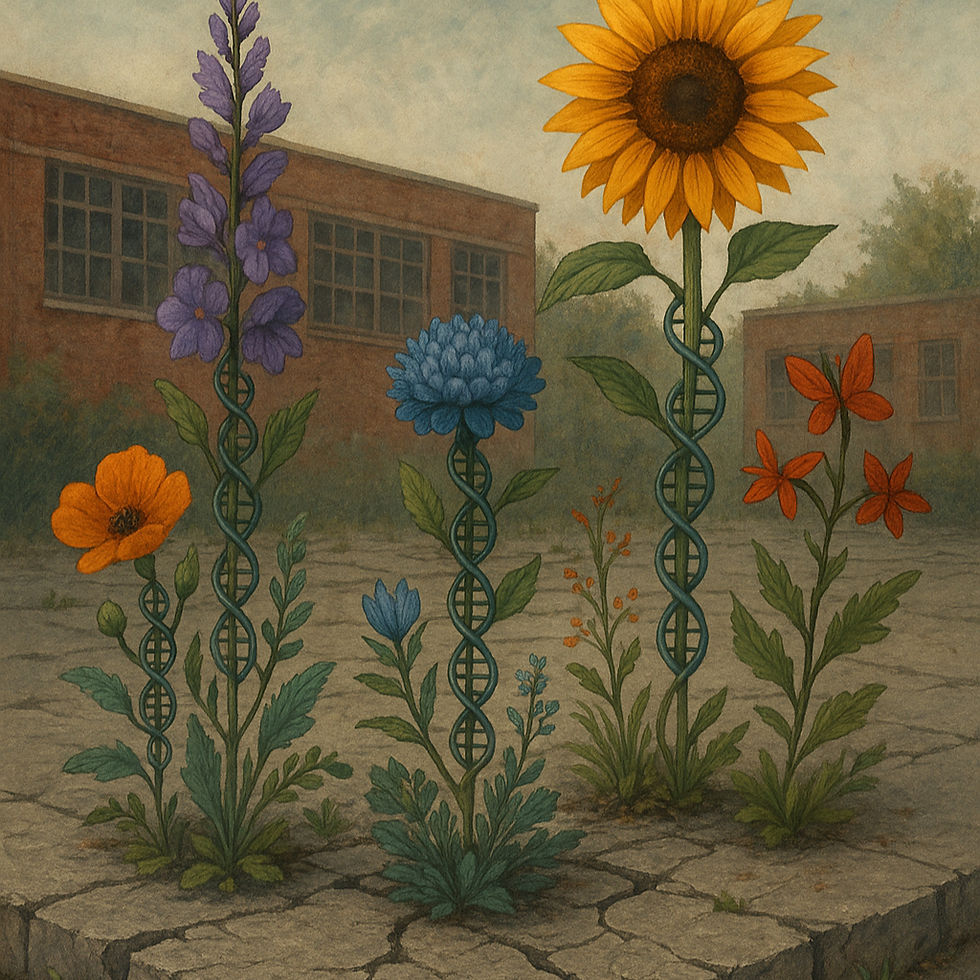My Creative Collaborator has Circuits
- Meridith Byrne
- May 1
- 3 min read
Updated: May 13

I’ve been using AI to support my creative, professional, and educational work recently, not as a machine that spits out content, but as a thinking partner that helps me process, shape, and strengthen my ideas. Collaboration, not automation.
The Neurodivergent Communication Guide I shared earlier this week is a perfect example.
I didn’t ask AI to write it for me. I brought my vision, my voice, and my lived experience, then used AI to help me organize, clarify, and scale it.
What I Don’t Use AI For
Writing my thoughts for me;
Deciding what matters;
Substituting for my experience, my ethics, or my lived voice.
I don't use AI to replace my brain. Why would I do that when I have expertise and deep knowledge and a freaking awesome imagination? I use it to clarify and organize - two life-long struggles that I can finally overcome with an assistive tool that works for me.

What I Do Use AI For
I use AI to:
Sort through my ideas when I have too many to wrangle;
Ask the right questions back to me (especially when I’m stuck);
Test the tone of something I’m writing;
Challenge me with tough-love edits or spot what I’ve missed;
Help me make a plan when executive function fog kicks in;
Reframe or restyle a piece for a different audience or format.
How I Trained My AI Collaborator
Like any tool, AI is only as good as the user and how they use it - and I’ve gotten better results over time by:
Teaching it who I am (what I value, how I think, what I’m working on)
Asking better questions instead of commands
Using feedback loops. I revise, it revises, and we get closer to what I mean
Saving context over time so I don’t have to start from scratch every session

Collaboration, clarity, and creativity - even encouragement. The ingredients I always needed to level up.
The Key: It’s Still Me
The thoughts are mine. The ethics are mine. The lived experience? All mine. MINE. AI just helps me make my ideas louder, clearer, and more accessible.
It’s important to me to be transparent because trust is built through honesty, and in a world full of noise, people deserve to know what’s real, what’s human, and what’s been thoughtfully co-created.
Here's the point . . .
I think this kind of partnership could be especially powerful for:
Neurodivergent creators who have a million ideas and executive function hurdles;
Educators and advocates who are overwhelmed by admin but still deeply creative;
People starting over who want to build something new with scaffolding and speed.
This Is Just the Beginning
This post is part of an ongoing series where I’ll share more about how I work with AI - not as my ghostwriter, but as my co-thinker.
I’ll also highlight tools, tips, and strategies that have worked for me (and that might work for you). Because if you’re building something with heart and brains, you don’t have to do it alone, not even inside your own head.
.png)









Comments